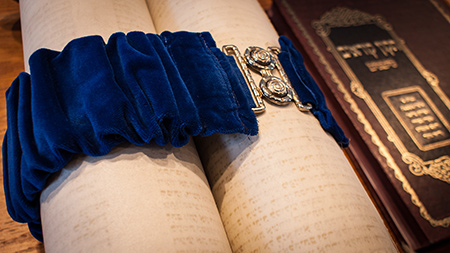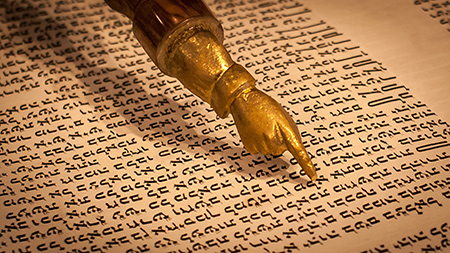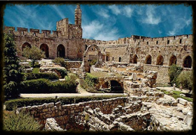
Below you’ll find an explanation of our Torah and Besora reading cycles along with the some of the upcoming readings for the coming months. In addition, be sure to check on the side bar for a Messianic Jewish Parsha commentary written by lay and professional leaders in the wider Messianic Jewish community.
Our Torah Reading Cycle

In order to facilitate a full reading of the Torah over a number of years, we have established a system of reading one full aliya of the week’s Torah portion each Shabbat, so that every seven years we read the full Torah out loud on Shabbat morning. We do not read the entire Torah portion out loud during our Torah service because we have chosen to read both Hebrew and English for the Torah, Haftara and Besora (New Covenant.)
This document illustrates how we structure our readings with information about considerations for special Shabbatot and holy days.
Chayyei Yeshua Three-Year Besora Reading Cycle
By Rabbi Mark S. Kinzer, Ph.D.
The Chayyei Yeshua Three-Year Besora Reading Cycle (2021 – 2032) is based on the conviction that Messianic Jewish life is founded on two intertwined narratives: the story of Israel contained in the Torah, and the story of Yeshua contained in the four Besorot (Matthew, Mark, Luke, and John). Click here for the 2010-2022 reading schedule.
Read more …
The traditional annual cycle of Torah readings invites us to set our daily life in the context of Israel’s founding events – the call of Abraham and Sarah, the exodus from Egypt, the giving of the Torah, and the journey to Cana‘an. Similarly, this new annual cycle of readings from the Besora invites us to see both our own personal stories and the story of Israel in the light of Yeshua’s redemptive journey, from his birth to his resurrection.
The cycle begins after Simchat Torah with the birth of Yeshua and his early work, just as the Torah cycle begins with the creation of the world and the call of the patriarchs and matriarchs.
The cycle reaches its climax, with the narrative of Yeshua’s death, between the 17th of Tammuz and the 9th of Av, when the Jewish calendar enters a period of mourning for the destruction of the temple, and three haftarot of admonition are read. It reaches its joyful conclusion with seven readings related to Yeshua’s resurrection, corresponding to the seven Sabbaths between the 9th of Av and Rosh Hashana, when haftarot of consolation from the latter chapters of Isaiah are read. The cycle thus points us to the truth that Yeshua, as the King of Israel and its representative, embodies in his person the meaning of the temple, the holy city, and Jewish history as a whole. His suffering sums up and purifies Israel’s suffering, and his resurrection will bring about Israel’s ultimate restoration.
How to Use the Cycle
The Chayyei Yeshua cycle found on the following pages is correlated to the weekly Torah portions with appropriate substitute readings indicated for special Shabbats and holidays and with readings indicated when double-parashiyot (e.g., Acharei Mot-Qedoshim) are read together or separately. This reading cycle is designed to take the community through the majority of the Besorot plus a selection of readings from the Apostolic Writings over the course of a three-year cycle.
The following table is designed to enable a congregation adopting the reading cycle in subsequent years to join in the reading cycle and read it along with other Messianic Jewish Synagogues throughout the world.
Congregational readings for the upcoming weeks
This wesbite lists the specific readings we’ll be doing during our upcoming Torah service.

